#our family stuff is deeply connected to our latine culture and that's why i want to start documenting it even if its just bare facts like
Text
@pikween replied to your post “went to the front desk at the emergency room to...”:
wait what do you mean she sees auras
sssoooo. im SO sorry im going to use this to lay down all i know of my mom's "clairvoyance" stuff (because i have this thing about documenting our family) so it'll be super long. but tl;dr she sometimes sees light around people and sometimes those people die within a week of that.
this has happened like 5 times so far and she's about 50 so it's not a common occurrence at all. those 5 times, she's received news that someone in town died and my mom has said that she knew they were going to die because the last time she saw them she could see the person's aura, which she describes as a bright white light surrounding them. when i asked her to describe it she said this picture of me reminds her of those auras.
This has happened both with people she loves and with complete strangers. She says she doesn't know when it started, she thinks maybe she was able to see them when she was a child, but she didn't know what they were so she didn't pay much attention to them.
The first time she realized was when her grandmother died, my mother was in high school, the same day my mother saw her aura, she died. Then it happened with some lady she saw across the street and the next day the lady was dead and it turned out she was the mother of one of my mom's acquaintances and that's how she found out that that stranger had died.
Then it happened with a couple kids, which is extremely sad, but my mom is a teacher, she sees about 300 kids every day so to me it makes sense it would happen with kids too, even if I can't in a million years begin to imagine what she must've felt with those.
And then it happened with my dad's mom too.
My mom also has had some very detailed visions and tons of instances of "bad feelings" that materialize a day later as bad news in our lives. Though she also has this with good news and she says she's seen auras on people (including kids) that don't die the next day or week; so when it happens she tries not to immediately expect a death.
and now for the debunking asdfghjks no, i'm a hugely skeptical person but for some reason i believe her about this. however, i have to say, she does lie, constantly, like waaay more than average, for many reasons. also migraines are known to show auras, not around people but it could be that? she says she doesn't have migraines but she's known for minimizing her symptoms. and last but not least, our family is like the poster of generalized anxiety disorder all the way up to that grandma who died in the third paragraph, so we're kind of always waiting for bad stuff to happen. so, yeah, all of these might just be coincidences.
my mom also is an extremely religious catholic but she does not link religion to any of this, which i guess is why i believe her, in part. i at least believe that she's seeing what she's saying she's seeing. my sister has some stuff like the visions and feelings as well. i sometimes know big news hours before anyone tells me about it, but i choose to believe it's because i am very observant lol
anyways. if you wanna hear about one of the visions, or feelings, or the news i know hours in advance, or what my mom is like in an abandoned asylum, shoot me an ask :)
#sorry again about the poorly constructed essay on my mom's clairvoyance#but thank you so much for asking about this <3#our family stuff is deeply connected to our latine culture and that's why i want to start documenting it even if its just bare facts like#this where you can't really see it lol#family history#replies#.
3 notes
·
View notes
Note
hi!!! I’m a puertorriqueño/nicaragüense enby looking into resources for learning bruja stuff, any good place you know to start?
I’ve gotten a couple of asks about this lately, and i’m so happy to know there are more latinos finding their way to the practice, tumblr’s brujeria tag often gives the impression that theres so little of us out there reclaiming our practices but getting asks like these brings me a lot of faith that thats not true :) first and foremost:
GETTING INTO BRUJERIA IS HARD.
it really is. baby brujos like us know that better than anyone- getting started, is often the hardest part of doing anything, and its no different with brujeria. it can feel so overwhelming and feeling lost is natural. from my experience, although i am still a newbie ive been able to find a lot of information out there, here are the best places to find info, sorted by priority:
FAMILY! a little self explanatory, but brujeria at its best is truly is an inherited, familial practice. If you can, before delving into internet resources, definitely connect w your family if you’re able to and ask them for guidance and about their experiences!
Your family is always the best resource over anything you can find online; theres so much misinformation out there or information not relevant to your region and if someone in your family already has established practices, always trust them first
Do some thinking back to all your cultural traditions, quirks, stories, and superstitions that you’ve learned from your family across time and never thought too much about- and rediscover them under a new light
KEEP IN MIND: brujeria is NOT a singular , concrete practice w concrete rules in itself, the term blankets a lot of traditions across latam, the caribbean, mexico, but imo its always best to stick with brujeria related to your heritage and where your connection is.
this can be hard for people (like me!) with huge family taboos toward brujeria that make it unsafe to ask around about, and/or limitations in family connections (also like me unfortunately). I personally can really only get the tidbits and stories that my family accidentally slips out when I occasionally see them. i try to write them down as much as possible, but the info i can get is limited... and thats where the following comes in.
ONLINE COMMUNITIES. i.e, youtube, tumblr, instagram brujx communities. notice I haven’t said “internet” in general- the reason why i trust community based social media more than random individual websites you find on google is because, in the case of brujeria and honestly any non-european craft, you’re often gonna find a LOT of white people writing blogs, books, etc about their “spiritual experiences” in latam countries and wrongly/incorrectly taking ATR or indigenous traditions (like with smudging). I know, with social media, although those same white people are also on insta and tumblr, it’s a LOT easier to see the face behind the accounts and differentiate who to trust, who’s legit and has real experience to share, rather than a nameless, faceless, website that is actually some colonizer sharing colonized ideas who thinks theyre on a spiritual journey taking traditions all willy nilly. And the fact that in social media, its much easier to find a lot of good brujas at once bc they tend to follow each other lmao.what ive personally done to find information tho is essentially SCOUR tumblrs, insta accs, and watching tons of youtube videos for posts, accounts, videos, etc, and narrowing down good info from there through , namely:
CHECKING WHO YOUR SOURCE IS!!!
ASKING YOURSELF FROM WHAT EXPERIENCE THEYRE SPEAKING FROM
ALWAYS TAKING EVERYTHING WITH A GRAIN OF SALT
AND STICKING TO INFO FROM CULTURES OPEN AND RELEVANT TO ME.
again, brujería is different depending on where your family is from in latam, and if you have an established connection to indigenous and/or black roots, so it’s useful to use keywords relating to that when searching (like if ur black, you can look into ATRs(african traditional religions) which tend to mix deeply with brujeria, if ur indigenous, finding other people from your tribe is great, and if youre not pursuing your already learned traditions you can think about connecting to them more deeply(altho indigenous traditions are their own thing, sometimes they do mix with brujeria too), and apart from familial roots, if ur catholic/christian and/or want to explore it, saint work/catholic brujeria might be a good fit for you!)
tumblr: there are a couple of fantastic brujxs on this site with great blogs and resources who have sadly left the site, but i still go through their posts heavily for spells, rituals, scraps of info! etting started w brujería is hard bc there’s really not that much info out there right now, but i compile as many good brujeria posts i find on my acc.
@brujeria-n-bongs great for catholic brujeria, now at @Upliftherbs on instagram
@brujeria-lost @barberwitch @reina-morada @highbrujita
@naomi121406 is by far the most active and informative tumblr resource ive found, shes an afro-indigenous diaguita curandera from argentina so shes also really helpful if ATRs are in your path!
Im not black myself and dont follow ATRs so i don’t really know many good blogs for afrolatine brujxs out there but if anyone would like to tag some in the replies thatd be awesome!
instagram: Ive found that instagram #brujeria tags has a pretty healthy active stream of posts. You’re gonna have to sift through a lot of them to get to the good stuff though- imo a lot of hispanics use the brujería tag not to mean “latine brujería” but just the spanish word for witchcraft, so a lot of white hispanics will put wicca/neo witchcraft in the tag. imo that’s really not something i’m personally interested in bc it’s not true to brujeria’s traditional nature, is very white/eruropean , and that wicca shit basically just got here. its a relatively a recent thing😭 so i try to stick to bruja accounts that aren’t influenced by that.
youtube: The youtube brujería tag is hit or miss? and again, contains a lot of wicca. But there are some good practitioners on there like The Mexican Witch! You just gonna look around, and dont be afraid to click on videos by really really small youtubers; they often are the ones with the most informative and legit things to say!
Everyone’s path as a bruja/o/x (sjdf trying to be inclusive w gendered language is difficult) is different but here are some topics i think are great to look into as a beginner!
ancestors: start at the bottom and figure out who they are, where theyre from, and set up an altar. it’ll help you a lot with figuring out your identity and path as a bruja later on.
setting up a grimoire
divination: tarot is actually what got me into brujeria at first! tarot isnt strictly traditional and is european in itself but its a wonderful tool for connecting to dieties, saints, etc as well as super fun and helps a lot with introspection
ritual abrecaminos, aka road opening spells!
amarres (love spells... proceed with caution)
limpias, mal de ojo
saint work: even if you’re not catholic (im ex catholic), a growing number of us (especially lgbt latines like @/upliftherbs on instagram) are starting to take back and decolonize our view of saints like La Virgen Maria and removing her from the rigid european/colonized interpretation thats been forced into us
candle spells in general (i fucking love candles tbh, cheap, easy, fun, and WORKS)
spiritual colognes, how to cleanse
finally, here are some helpful posts yall should definitely read and think about moving forward!
about using tumblr as a resource
about looking into brujeria as a part-white part latine
bruja psa + about reclaiming lost indiginety
honestly naomi’s entire brujeria tag is great and super informative for beginners and basically holds answers for almost anything at this point
hope this post helps yall out!

EDIT: oh lord now that this is posted the outline format i tried to use is all kinds of fucked up please dont mind the odd numbering lmfao tumbr hates organized formats
122 notes
·
View notes
Text
Welcome to Dugi otok

It's been my wish for quiet some time to visit Dugi otok (Long Island), the long and the most distant of the Croatian islands located in the center of Croatian part of the Adriatic sea. Actually, I visited one part of it – the Nature Park Telašćica, when I was a kid more than 15 years ago…but never other places and with the new purpose. However, my wish had been granted surpassing all the expectation I had about this trip.
The main reason why I wanted to travel there was to find and record the locals who speak the local idioms. For those of you who've been following me for the last couple of years and especially my YouTube channel you know that this was a super exciting trip for me. These native speakers represent a national and cultural treasure in terms of lingusitic heritage and a history of the litoral and maritime people living here for centuries, with some of them being isolated or with little touch to the land (terraferma). Thus the excitement to hear the living past and a nice blend of the Croatian Slavic culture and the Mediterranean Latin influence.
Apart from finding the native speakers I was excited to find out more about being and living as an islander. So I had to chance to record, hear and take photos of stories and experiences of the local people from several villages including both youth and seniors.
How it all started
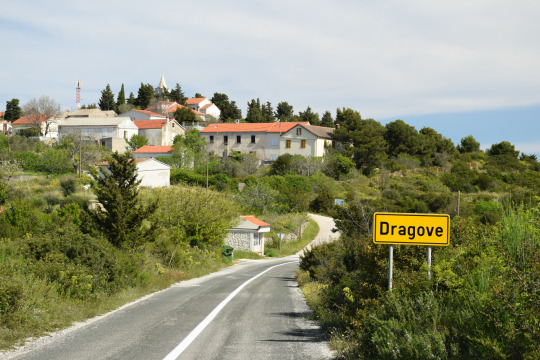
I was super lucky to be given the opportunity to stay for four days on the island and meet many people whose help I never expected. I got the accommodation for free at the local monastery of St Michael in Zaglav which was thrilling enough and especially valuable since they allowed me to stay during the festive days around Easter. As soon as I got the confirmation that it's not a hallutination but a reality I looked for help among friends and acquaintaes who could aide me in getting to know the island and the locals. Without them this trip would have looked totally different as I knew practically nobody there. In the end I made lots of friends and had plenty of fun while doing my mission. I spent literally days and hourse right before the trip to get the additional camera equipment, gather as much as valuable information about the locals as possible, creating my own map of the potential people for the intervju and preparing the daily routes.
But before we dive into the adventures here's a some info about the island.
About Dugi otok
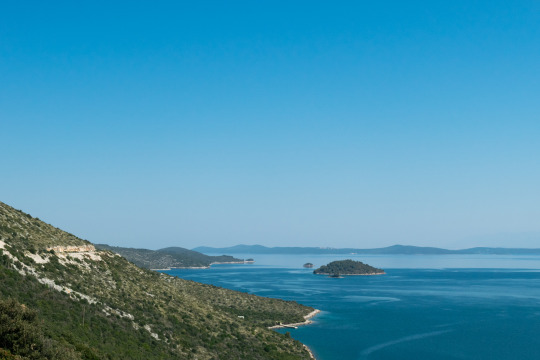
What do you need to know about this paradise? Dugi otok is the largest of the North-Dalmatian islands situated in the central part of the Croatian Adriatic. Iti s also the last island before the open sea and Italy on the other side of the Adriatic bay. Just like the majoritiy of our islands it has many hills and small bays with its highest peak of Vela Straža at 338m. The island is around 45 km long (hence the name) but at some points its width ranges between 1 and 4 km. This contrast was especially visible when I was driving a car from the south and at one point I stopped and looked to my right – there you see the islands towards Zadar and Velebit mountain. Then you turn to the left and see the nothing except for the blue sky, horizon and the deep blue Adriatic sea. However, during the crystal day and with a good eye sight one can see the eastern Italian coast, more precisely – the Apenine mountains. After all, Italy is less than 200 km away across the sea.
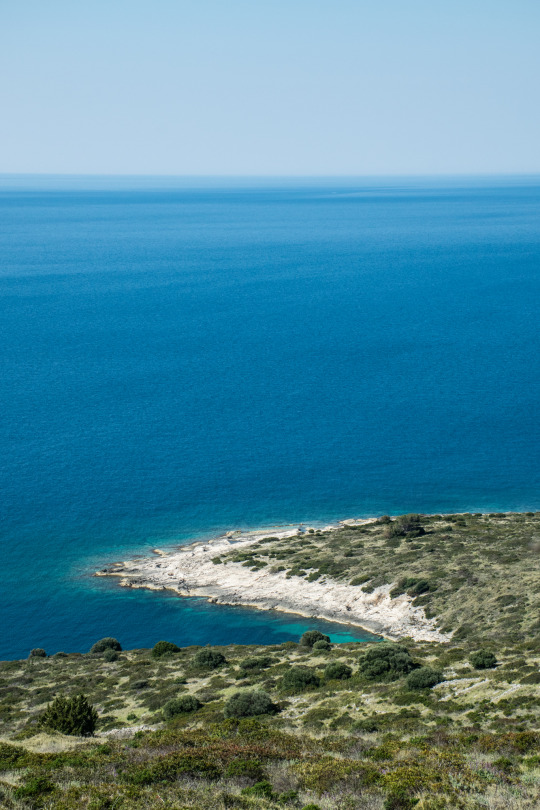
Its western coastline bordering the open sea characterize the sharp contrasts: the southern part around the Nature Park Telašćica is surrounded with impressive cliffs that go up to 80m in height. Telašćica is one of the most beautiful place sin Zadar county and frequently visited by numerous tourists each year.

On contrary, on the other side of the island you can find more peaceful bays. The two most notable beaches are Sakarun and Veli Žal where Sakarun is the most famous one. However, last years due to growing number of visitors and greediness it no longer looks and is as it was 10 years ago. I also never went there but visited Veli Žal instead. All in all, the nature on this island is incredible and as the locals say – you hardly notice any seasonal change. It always looks as if the time had stopped between spring and early autumn. Always green and no leafs falling. In terms of nature this island will be a perfect place to escape the reality and the stress of the modern lifestyle spent in larger urban areas. Clean sea, peaceful nature and the welcoming locals.
People, customs and history
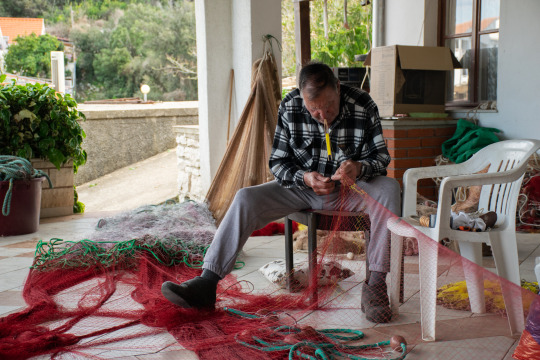
Speaking of locals the island has a population of roughly 1500 inhabitants spread in around 12 local villages. The largest of them is Sali in the southeastern part of Dugi otok with the population of around 800. On contrary, places such as Dragove or Veli Rat in the north have between 40-70 inhabitants statistically. However, accoridng to the stories, there's far less people who actually live for the whole year. The sad truth and reality is that these places will become ghost towns within 10-20 years as the majority of these locals are seniors over 80 years old. The thing is – apart from them most of the visitors are so called „weekenders“ – the islanders who live on the land (e.g. in Zadar) who come there over the weekend…or the other part that's present during the summer are the diaspora. These are the people whose parents, grandparents or further ancestors emmigrated to the United States, Southern America or Australia and New Zealand at the beginning of the 20th century or around the years of the WW2 in search for better opportunities and life across the sea. There are even some remains left of the WW2 bunkers and ship tunnels that I am going to describe you later (I couldn't resists visiting some of them). And even today one can find near the central part of the island a restricted zone which belongs to the military whose base is on top of the hill. It's said it used to watch over the potential threat that comes from the south or across the Adriatic sea.

The population of the island was thus much larger, actually surprisingly larger. However, the Great War in 1918 and the Second World War had taken the toll with great consequences. Many of the islanders died or were killed during those time, especially the young people, men, who were meant to start new families. Those who survived either stayed or moved to new places. Some places used to have a lot of children attending the schools. Now some say it's „a success“ when they managed to gather up to 10 children of the elementary school in total. And they come from different villages.
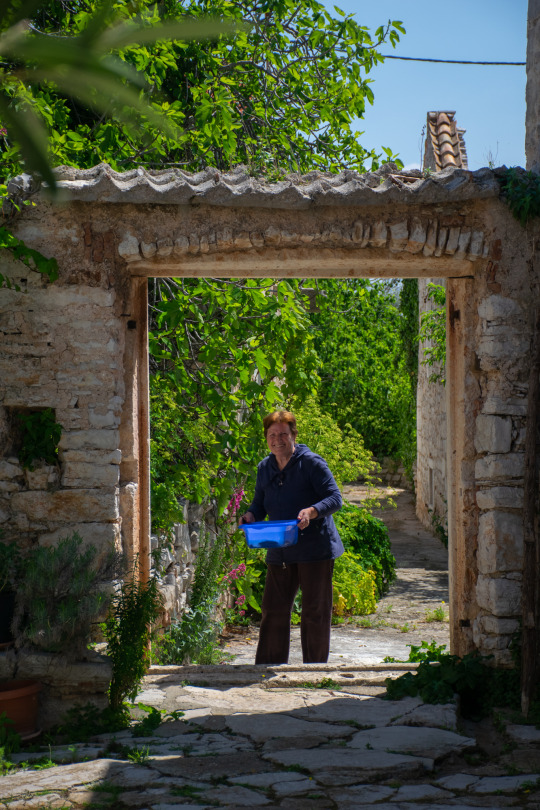
Being on the island many of the locals have traditionally been turned towards the sea and what it offers. It's not unusal to find people who have spent their lives sailing around the world. Some have been fishermen. Some are into agricultulre and what it offers. Unlike us who live on the mainland here you can't have super large fields but smaller ones where you take care of goods and cultures such as figs, oranges, lemomns, tomatoes, potatoes, salad and olives. In Sali there is a fish factory which provides employment for good amount of the locals. There is another important factor in the lives of the islanders and that is the Church and religion. It's not unusual to find many of them to be (kinda) devoted Catholics who go to the church every Sunday. After all, as some explained me, it's also a social thing or event, when you think about it. And living there for centuries, relatively isolated and surrounded by nature and vast sea surface, one shouldn't be surprised to see faith and religion rooted deeply in the locals. And being an islander does not mean living an easy life, as you are going to find out. Speaking of religion there is this Franciscan monastery of St Michael in Zaglav with a church that was built in mid-15th century. That's the place I stayed at.

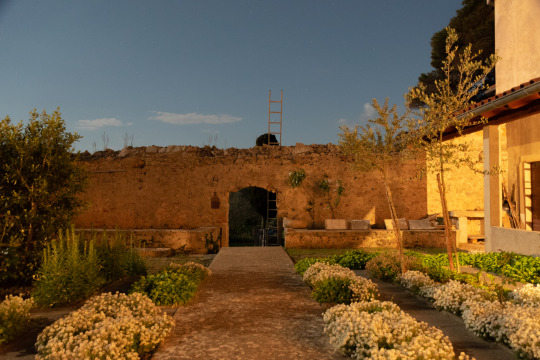
The places on the island are connected with one main road from which you have amazing views over the surrounding islands and area. The island has also got quiet good connection with the mainland via trajects and speedboats (catamaran). There are four catamaran lines that go daily from Zadar to Dugi otok. If you are planning a trip on Dugi otok by car you will arrive by traject to Brbinj in the northern part of the island. The same goes if you want to leave the island by car. Speaking of cars the only gas station on the whole island is located in Zaglav in the south. That's also the place I arrived to and stayed at for four days.
What else to add? During the summer season many are some festivals related to religious events, local music and traditional kitchen. Those who prefer to spend their time actively they can go exploring the area, follow many hiking roads, visit the caves, Park Telašćica or National Park Kornati. If you are more into sports then I suggest finding some diving locations or courses, try running, trekking, biking, trail, sailing etc. At the northernmost point of the island at Veli Rat there is another landmark of Dugi otok - the lighthouse of Veli Rat.
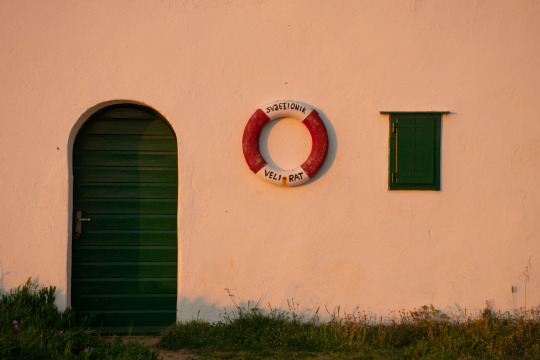

I forgot to mention some of the older history of the island. Here are a few interesting things to know. The island was already inhabited with settlers in the early ages in paleolithic and mesolythic. Several years ago scients discovered the human skelleton that date back to 11 000 years BC. This discovered male Dalmatian known as „Šime“ died unnatural death at the peak of his retirement age of 40.
One can find the remains of the settlements and stuff of the ancient Illryians. There are also several caves on the island and around Telašćica park one can find tomb hills dating back to Iron age 800-400 BC. The last thing I'd add here is the Grpašćak Fortress on the western coast above the cliffs of Telašćica. It was built in 1911 by the Austro Hungarian Monarchy which served as a military patrol base. I came close by my first evening on the island but more about it in the next post..
Time for a break

Alright! I hope you have some idea about Dugi otok. More in details on specific topis as we surf through the days.
Grgo
#dugi otok#dugiotok#croatia#dalmatia#travelling#long island croatia#adriatic sea#local people croatia#locals on islands#potepuh#zaglav#sali#božava#veli rat#lighthouse#nature#landscape#dragove#savar#telašćica#telascica#cliffs#adriaticsea
4 notes
·
View notes
Text
USA: Virtuosic Artists Collide in Elegant Conversation of Latin + Blues on StringShot
Virtuosic Artists Collide in Elegant Conversation of Latin + Blues on StringShot

Trio’s debut album and U.S. tour set to capture the hearts of roots, rock, world, and jazz fans
There’s a bedrock of sound that unites the music of the Americas, despite the remarkable variety of musical expression on the surface. And then there’s the unique, near-magical energy that comes alive when devoted musicians let their skill and artistry converse.
StringShot, the new trio collaboration between legendary blues slide guitarist & producer Roy Rogers, Brazilian guitar virtuoso and songwriter Badi Assad, and South American stringed harp master and violinist Carlos Reyes, harnesses both, bringing blues and Latin music into close dialog while demonstrating how well friendship translates into flawless performances and songwriting. Their beautifully produced debut album, StringShot, leaves ample room for the musical kindred spirits to strut their stuff and move with effortless tenderness.
“I’m always trying to push the envelope, ” laughs Rogers. “It’s conducive to great music. The Latin and blues conversation has always appealed to me, and I love the rhythms and the challenge of a different genre.This is the first time I’ve gotten to explore it outside of a strictly blues context, and it’s been wonderful.”
“Though our styles are totally different, we use them as a way to communicate our hearts out,” explains Assad. “In the lyrics process, we could feel that we take in life in similar way, with day-by-day discoveries, with a lot of simplicity coming from the soul, and a love for music with a lot of freedom. Roy has a very big heart and he embraced me as a sister, with that same kind of care and support. You can hear it in the music, our very special friendship.”
American audiences will get to hear the collaboration live for the first time, as StringShot embarks on its debut tour on the West Coast this autumn.
{full story below}
Rogers, Assad, and Reyes all share a passionate devotion to their music and instruments, reflected in wildly creative and successful careers that cross boundaries and defy borders.
Rogers apprenticed playing with the greats, in particular John Lee Hooker, and later forged a name for himself as a peerless slide player and talented producer and songwriter. (He’s been nominated for 8 GRAMMYs for both.) Assad, daughter of a world renowned and deeply skilled musical family, took her classical training and put it through the filter of Brazil’s Afro-Latin heritage, evolving into an effortlessly graceful singer-songwriter. Reyes, a virtuoso on the Paraguyan stringed harp as well as the violin, has often taken his instruments into new territory, both as a player and fearless collaborator.
There is another, deeper layer connecting these musicians, a mutual fascination with each others’ styles. Rogers, for example, has toured Brazil and was ‘taken’ by the country’s cultural wonders, an experience that sparked “Blues for Brazil,” a song he originally recorded with legendary harmonica player Charlie Musselwhite but revisited and reimagined with StringShot.
Rogers’ son Sam, a beatboxer and vocal percussionist, visited Brazil and held a workshop a few years back. Assad showed up to take his class and that connection eventually led to Assad becoming friends with the entire Rogers family with Gaynell Rogers taking on Assad’s management.
Through this chance connection,Assad and Rogers decided to also collaborate together. “When I first went to Roy’s house to rehearse, I was very nervous because I didn’t know him very well and I had no idea what Iwould play on the guitar. Roy is a genius and I became shy. But he and his wife welcomed me with so much love and simplicity that my heart melted. It was ground zero of our friendship.”
That friendship-launching rehearsal led to a full-fledged project that brought in another key element, Reyes’s harp and violin; Reyes previously had been featured as a special guest with Roy and his band The Delta Rhythm Kings for the past few years. All of the instruments share strings, but occupy radically different spaces and contribute different voices to songs that range from pensive ballads (“God Prayed It” ”) to Afro-Cuban-inspired frolics (“Back to Havana”). The main thing, Rogers says, is to stay true to your sound, even as you embrace and dance with others’: “The whole criteria as a player is to be who you are. You may admire Brazilian or Cuban players, but you can’t just imitate. It’s a confluence of factors here, and these influences are coming together because we’re creating a sound together.”
The connections and differences enrich the music. “Carlos is South American as I am and in that sense we share some similar approaches to the rhythmic background,” explains Assad. “Yes, our countries have different styles of music but the heat behind the chords and the passion behind the rhythms are the same. So we understand each other in a silent and ancestral way. With Roy it is different. We share similarities because we play the same instrument and sing as well.” They also wrote the lyrics to several of the album’s songs together, sending ideas back and forth between California and Brazil. (“Wounds of Sight” and “Back Along the Way”)
Drawing on shared sensibilities and distinct contrasts, channeling them through their individual artistic approached, StringShot really came into its own in the studio, as Rogers began to hone the sound. “The sound happened in the studio. I had an idea of how the sound could come together. You know when you’re recording if it is going to work good or not,” Rogers notes. “There were more than a few moments in the studio where I went ‘wow’ this is the sound. We’ve got it.”
The pinnacle of the production approach resounds on the moving, “God Prayed It,” a song Rogers originally wrote with Metallica bassist Jason Newsted for another project, but one Assad transforms with profound emotion. “I thought this song and several of the other tracks deserved a full production treatment. That’s why it’s lush; that was by design,” Rogers says. “You’ll hear a few sparsely produced songs in there for balance, but at moments, we decided we would make it about as full as you can get, with added string arrangements and more.”
“When you explore a new combination, it’s exciting, especially when it comes together for all the right reasons,” muses Reyes. “It’s the interaction.”
“That connection really contributes to the sound,” agrees Rogers. “I want it to be known as the StringShot sound. This kind of musical collaboration works when artists are open to explore.”
Links
Website
Pre - Order Album Release
One Sheet
Instagram
YouTube
Contact
Publicist
Ron Kadish
812-339-1195 X 202

via Blogger https://ift.tt/2P252Ke
0 notes